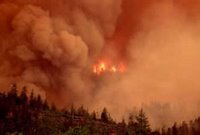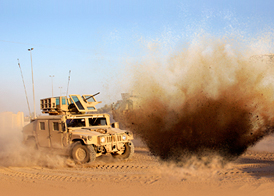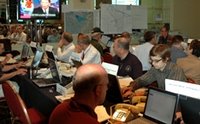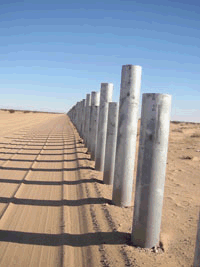Securing Our Schools
 Yesterday I visited a local high school in Northern Virginia to meet with school officials and local emergency managers to discuss school safety, and the federal government’s efforts to help schools prepare for emergencies – both man-made incidents and natural disasters. I was joined by Education Secretary Margaret Spellings, and Commerce Secretary Carlos Gutierrez, who outlined their respective departments’ efforts to enhance school safety.
Yesterday I visited a local high school in Northern Virginia to meet with school officials and local emergency managers to discuss school safety, and the federal government’s efforts to help schools prepare for emergencies – both man-made incidents and natural disasters. I was joined by Education Secretary Margaret Spellings, and Commerce Secretary Carlos Gutierrez, who outlined their respective departments’ efforts to enhance school safety.The tragedies we saw at Columbine, Virginia Tech, and even earlier this month in Cleveland seem to point to an increased risk of violence in schools. But despite these high profile incidents, the fact remains that schools are some of the safest places for children in our country.
We would be remiss however, if we failed to acknowledge that our children do face a minimal amount of risk at school. We need only recall earlier this year when a tornado hit Enterprise High School in Alabama, tragically killing several students.
In light of this risk, teachers, parents, administrators, and local first responders should take a few common-sense steps to be prepared for an emergency of any kind. It’s important that schools have emergency plans in place, practice those plans, coordinate with parents and local first responders, and if an incident does occur, follow the plan to reduce potential harm to students.
DHS is actively engaged with our federal partners, as well as with state and local officials to help schools be prepared. We have a number of resources available for teachers, parents, and school administrators, including interactive threat assessment CDs, safe school design manuals, and funding available through our grant programs. I encourage you to visit our Ready Kids website at http://www.ready.gov/ for additional information and preparedness tips.
I’ll leave you with an important statistic from the U.S. Secret Service and the Department of Education’s Safe School Initiative. They found that in 81% of the cases of targeted school violence they studied, other people had some type of prior knowledge that an attack was being planned. The lesson here for everyone – students, teachers, administrators, coaches, and parents – is if you see something, say something.
We can’t completely eliminate violence in schools, and we certainly can’t prevent natural disasters or other emergencies from occurring. But we can ensure that our schools are as prepared as possible and that we’re all working together toward the common goal of safer schools for our children.
Thanks for reading.
Michael Chertoff
Labels: preparedness, Ready.gov








 Homeland security often is a balancing act between two ideals: vigilance and convenience. Nowhere does this dichotomy between security and facilitation play out more dramatically than at our borders and
Homeland security often is a balancing act between two ideals: vigilance and convenience. Nowhere does this dichotomy between security and facilitation play out more dramatically than at our borders and 






